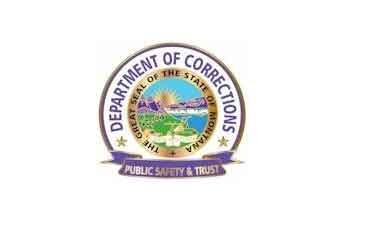|
|
| Montana DOC: Developing a Reentry Plan |
| By Bob Anez, Communications Director, Montana Department of Corrections |
| Published: 11/28/2011 |
 Every year, about 2,100 offenders
leave Montana correctional
facilities and return to
communities to continue their
efforts to develop lives free of
crime. The ability of the Montana
Department of Corrections
to provide the programs and services
necessary to prepare them
for that time and help them after
release is the focus of new multiagency effort.
Every year, about 2,100 offenders
leave Montana correctional
facilities and return to
communities to continue their
efforts to develop lives free of
crime. The ability of the Montana
Department of Corrections
to provide the programs and services
necessary to prepare them
for that time and help them after
release is the focus of new multiagency effort.
Corrections officials are working with Gov. Brian Schweitzer‟s office, the Department of Labor and Industry, court officials, Department of Public Health and Human Services, Montana State University Billings, and the Board of Pardons and Parole on developing a comprehensive state reentry plan. The goal is to create a more seamless system of effective services for offenders, beginning with their arrival in correctional facilities and extending through the day they complete their sentences and leave state supervision. Reentry refers to that time when offenders transition from correctional facilities – including prison, prerelease centers and drug or alcohol treatment programs – to the community. The effort recognizes that the assistance offenders need to have a better chance of success begins long before they walk out the door. Montana has long had an array of programs designed to help offenders before and after they reenter their communities. Corrections officials have long understood that the better prepared an offender is to leave a correctional facility the better his or her chances of success in the community. But department leaders also recognize that an analysis of the existing programs and services, along with development of a formal statewide reentry plan, has the potential to improve delivery of services, increase the benefit to offenders, reduce recidivism and increase public safety. “Reentry is a critical piece of the corrections puzzle and we are making improvements in what we provide offenders a top priority of this department,” says Corrections Director Mike Ferriter. “We believe we are doing a good job of assisting offenders in their return to communities, but we also think we can do better.” A 22-member task force has started work on assessing programs, policies and procedures that are in place to as-sist offenders in reentry. The group‟s ultimate purpose, as explained in its vision, is to ensure every offender released from a correctional facility “will have the tools needed to succeed in the community.” Members established seven priorities at its first meeting in August:
“Effective planning means successful returns to communities and that means fewer failures and more safety for Montan-ans,” Ferriter says. “That‟s the over-arching goal here.” The reentry initiative is an outgrowth of a pilot project that has been under way in Billings since 2009 when MSU Billings used as federal grant to provide educational services to inmates at Montana Women‟s Prison. The efforts expanded to also ad-dress employment, family and housing issues. The Billings Area Reentry Task Force was formed. The following year, the college obtained another federal grant to continue the effort with focus on high-risk in-mates leaving the prison. Last month, The task force received two more federal grants totaling $443,000 to expand the program to additional inmates and to create a mentoring program for female inmates. The task force has the option of seeking another $150,000 to continue the mentoring program for a second year. Sam Casey, reentry program coordinator for the Department of Corrections, is director of the statewide project. Other members of the team are Ferriter; Ross Swanson, interim warden at Montana State Prison; Jo Acton, warden of the women‟s prison; Pam Bunke, administrator of the Adult Community Corrections Division; John Daugherty, Information Technology Division administrator; and Gayle Lambert, Montana Correctional Enterprises administrator. Also, Kim Gillan and Shaun Hoover, MSU Billings; Anna Whiting-Sorrell, Department of Public Health and Human Services director; Lesa Evers, state director of Indian affairs; Beth McLaughlin, court administrator for the Supreme Court; Fern Osler, executive director for the Board of Pardons and Parole; John Williams, regional probation and parole administrator; Adrianne Landreth, DOC policy specialist; Sally Hilander, DOC victim programs manager; Steve Olson and Adam de Yong, Department of Labor and Industry; Jessica Rhoades, governor‟s office; and Bob Anez, DOC communication director. Reprinted with permission. Other articles by Anez |
Comments:
Login to let us know what you think
MARKETPLACE search vendors | advanced search

IN CASE YOU MISSED IT
|


This is great! I just started working with Idaho DOC as a teaching assistant. I am also assisting with the rewriting of the Prerelease Manual. I can see that there is a similar theme across the nation. It seems like some all inclusive, appreciative inquiry or some similar approach would be most helpful. Don Brown, MAdEd, PMP
That is a good plan. Seems like interaction between the various agencies will support the ex-offender and decrease the recidivism rate. I wonder what would happen if more community agencies and faith-based organizations joined in.